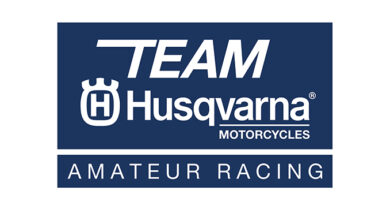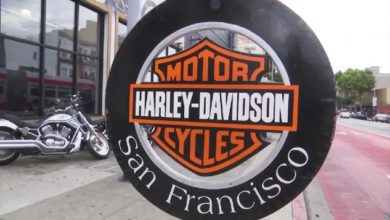May 12, 2008 – How to make the best of a tough decision
By Neil Pascale
Editor
For Jim Bower, CEO of one of the largest powersports dealership groups in the nation, the process of deciding whether to reduce personnel started last year when he saw dealer and manufacturers’ inventories beginning to build.
For others, the possibility of reducing staff could be a decision made in the weeks to come if the troubling first quarter lingers. An unstable economy and shaky consumer confidence have brought a question often reserved for wintertime in northern climates to the typically hot selling season: At what point should dealers make personnel cuts, and where in the dealership should those cuts occur?
Those questions were brought to a number of veteran industry people, including several dealer principals. Their collective response largely focused on what departments dealers should not trim — the sales department — as well as the importance of maintaining the volume of other expenses, including marketing and training dollars. The industry insiders interviewed also highlighted what dealers should consider before making any drastic personnel moves.
“When times get difficult like this, what’s important for me is trimming fat but making sure you don’t get into the muscle,” said Bower, the CEO of America’s PowerSports, which has 18 locations in the United States. “If you go too far with your expense cutting, you could certainly destroy your business where you can’t produce when the business is there.”
Sam Dantzler, president of the RPM Group, the industry’s largest dealer 20 group provider, advised dealers to look at their employee pay plans first, ensuring the sales staff is on a commission-based pay plan. “That’s the first switch I’m making before I cut anybody,” he said.
Bower, who formerly oversaw 25 stores that generated $2 billion in annual revenue for Sonic Automotive, advises the same move.
“The more compensation that can be tied to productivity, the more variable you can make your expense model,” he said. “That’s the most important thing that I like to do.”
Bower says the incentive-based pay is not only a benefit to the company but to the employee as well.
“I don’t do that to try and hurt the associate who’s working for me,” he said. “What I’m doing is trying to reward the most productive people and make sure we can put the most money in their pocket even during tough times, and that they’re rewarded for the extra effort that they have to put in during these hard times. I’m trying to reward productivity, not punish nonproductivity.”
Even if payrolls reflect productivity and a personnel cut is still needed, the general consensus is to keep the budget cuts away from the sales floor.
“The No. 1 deficiency in this country is still lack of salespeople,” Dantzler said. “It’s not lack of people coming through the door. It’s lack of salespeople to put on a unit and send them home today. So you have to have the people onboard and if you set the pay structure accordingly to pay them off on what they produce, then the payroll doesn’t eat the company alive.”
So if not the sales department, where to cut? Some dealers look first at the financial performance of their different departments, others look at individual personnel.
Clark Vitulli, part owner of Harley-Davidson of St. Augustine in Florida, prefers the latter. “Rather than look at it by department, I would look at it by person,” said Vitulli, who has worked in the powersports, auto, marine and RV industries. “Who is least productive, has the worst attitude? Who can we afford to lose?”
Greg Mackey, president of Cycles Central, which has eight locations, says his company has benchmarks in place to determine department staffing. For example, Mackey expects to make an average of $25,000 per month per parts department employee. “If we start to get above the number (per employee), we hire,” he said. “If it’s below that number, it’s time to trim back.
“If you’re continually managing those benchmarks, then we’ve never said we’re going to make a 10 percent cut across the board.”
Morris Baker, CEO of Family PowerSports, which has five locations in Texas, follows a similar pattern, examining each department before deciding whether to make a cut. Of course, using that method requires the dealership have a strong accounting system.
“You can be quicker to react if you have good information in front of you,” Baker said to any sales downturns.
Bower of America’s PowerSports says he always looks at cutting support positions before eliminating productive positions, the latter of which include new unit salespeople and service techs. “I look for ways to combine or reduce the support roles because when times get tough like this, you got to protect your productive people,” he said. “That’s our lifeblood.”
Dantzler follows a similar line of thinking.
“Quite frankly, it’s the operational people who have to take on a bigger burden,” he said of personnel downsizing, noting operational people are staff who are not generating revenue. Dantzler cautions that some dealership positions do not directly generate revenue but have a definite role in the profitability of a department, noting porters or service tech support positions as one. Dantzler says reducing these positions will result in decreased efficiency for service techs and hence drop department sales.
While cutting personnel is never an easy thing, dealer principals caution it should not be the last expense category to be closely scrutinized.
“I have seen dealers even in down markets not cut certain things,” Vitulli said. “One of them is marketing dollars and the other is training dollars. That is so counter-intuitive. You come into tough times and say, ‘Hey, I’ve got to cut ad budget and I’ve got to cut training.’ Well I believe after looking at very successful dealers, you don’t cut either one during a down time. You at the very least maintain if not increase slightly.”
Vitulli notes there are advantages to a business in not cutting back advertising in local media when most businesses are doing exactly that. “You can ask for more,” he said of local radio, TV and newspaper advertising, “and likely you can get a lot more. So you don’t necessarily want to cut back.”
Baker of Family PowerSports in Texas says he maintains the company’s advertising level — 1 percent of gross sales after co-op — no matter the state of his business.
“We just never waver there,” he said. “If we don’t do that, we can’t have a standard in which to go by. You couldn’t accurately measure business if you weren’t doing a few things exactly the same year-over-year.”
Vitulli says ensuring the training budget remains stable can be especially key.
“Training is an area that people watch,” he said. “You know, the lifeblood of our business is people. All we have is walls and brick and mortar. The rest that makes us successful is our people. Believe me, everybody at your store talks to other people” in times when training expenses are cut.
Making across-the-board cuts, such as in cutting salaries of all employees or reducing health care benefits, also was not a popular option among those interviewed.
“The last thing I want to do is punish one productive person,” Bower of America’s PowerSports said. “These are hard times and you have to make hard decisions.
“The biggest enemy of any dealership business is turnover. It’s public enemy No. 1. When things get tough like this, I want to try to really protect the most productive employees out there and help them get through these times.”




